An inner tube is an essential part of any bicycle, that is unless you are running tubular or tubeless tyres. It is inevitable that at some point you will need to replace the inner tube on your bicycle, so it is always worth having a couple of spares so you can get back on the road straight away.
With the wide variety of different sized inner tubes, this guide is intended to help make it easier to choose the correct tube for you.
Inner tubes come in a wide variety of sizes, and also different valve types. Things to consider when selecting your inner tube are;
The best way to check what size inner tube you need is to look on the sidewall of your tyre. Tyre manufacturers print the size on the sidewalls, so look out for numbers such as ‘700x23c’ for a road bike, or ‘26x1.75’ which is for mountain bikes.
It is more than likely that the inner tubes you will have used are made of a butyl rubber. If you are looking for marginal gains a change to latex inner tubes can reduce the weight in your wheels where it really matters.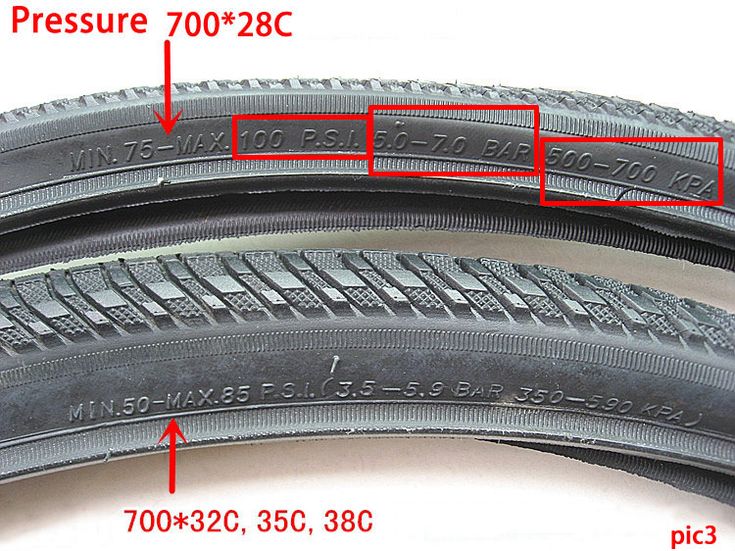 It can also smooth out the ride.
It can also smooth out the ride.
There are however two downsides to latex inner tubes. The first is that they lose air much quicker, and so will need to be pumped up more often. Not during a ride, but at least before every ride. The other downside is that they are a little trickier to fit, and can be caught in between the tyre and wheel causing them to blow as soon as you pump them up.
View All Inner Tubes
Andy is the Product Specialist and Content Writer at Ribble. He takes part in all disciplines of cycling, but can mostly be found either on his road bike or on the mountain bike trails.
If you are in any doubt about what is best for you then our Cycling Experts can help via email or telephone
Email: [email protected]
Tel: +44 (0)1772 963400
Let’s be honest – tubes are a bit weird. Wiggly black bands of rubber, tubes are tedious to install, constantly need to be re-inflated and can be defeated by the tiniest thorns. When it comes time to purchase a new tube, how do you know which one to select?
When it comes time to purchase a new tube, how do you know which one to select?
Between the dozens of size options and the various valve stem types (Presta, what is that?), selecting the correct tube for your bike can be challenging. Check out our video below, or scroll down for a quick photo guide to help you select the perfect tire tube for your bicycle:
There are two important dimensions you must know when selecting a tube: The diameter of your wheel and the width of your tire. You need both to select the correct tube size. These dimensions can be found on your tire: Diameter x Width.
The first number is the diameter of your wheel. Sizes such as 26, 24, 20, 27.5, 29 and 700c are common tire diameters.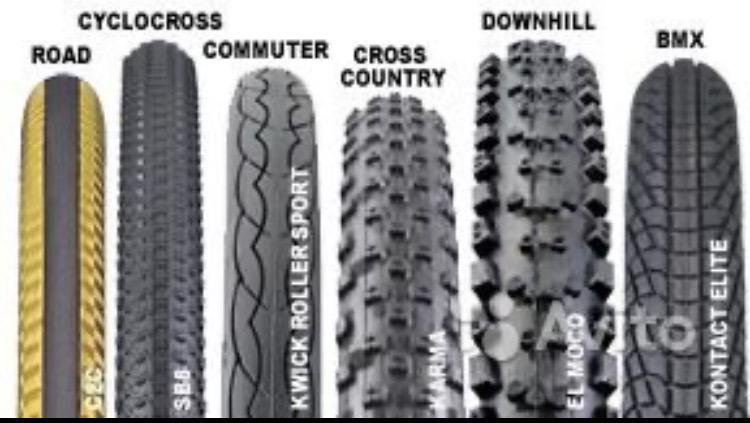 The second number (after the X) is the width of your tire. The range for widths is usually between 1 and 3 inches. For example, a 26 x 1.75 size means the tire diameter is 26 inches and the tire width is 1.75 inches.
The second number (after the X) is the width of your tire. The range for widths is usually between 1 and 3 inches. For example, a 26 x 1.75 size means the tire diameter is 26 inches and the tire width is 1.75 inches.
While your diameter measurement needs to be exact, your width measurement does not. Because inner tubes stretch, they typically come in a range of widths. For example, one of our most popular tubes is the 26 x 1.75-2.125” which means it fits a 26-inch diameter tire with a width in the range of 1.75 to 2.125 inches.
Some tires have dimensions in millimeters, but the basic measurement structure is still the same: Diameter x Width. Instead of inches, you will instead see something like 700c x 18 mm. The letter at the end of the tire diameter is a carryover from an old French system that used letters a, b and c to designate inner wheel rim diameters.
After you know your tube size, you need to select your valve stem type. The valve stem is the metal part of the bicycle wheel that sticks out and allows air to go into (and stay in) your tire. There are three types of valve stems: Schrader, Presta and Woods/Dunlop. The Woods (or Dunlop) valve stem is extremely rare and typically only found in the Netherlands or Asia, so we won’t spend any time on it here.
The valve stem is the metal part of the bicycle wheel that sticks out and allows air to go into (and stay in) your tire. There are three types of valve stems: Schrader, Presta and Woods/Dunlop. The Woods (or Dunlop) valve stem is extremely rare and typically only found in the Netherlands or Asia, so we won’t spend any time on it here.
Schrader valves, on the other hand, are the most common valve stems found on bicycles. The most recognizable of the bunch, sometimes they are referred to as standard valves. An easy way to remember if you have a Schrader valve is to think of the “S.” Schrader valves are short, sturdy and standard. If you don’t know what valve stem you have, it is likely a Schrader.
The last valve stem type is Presta. Presta valves are traditionally found on higher-end bicycles preferred by professional cyclists. Think of the “P” in Presta standing for professional, performance and premium. If you have a Presta valve, you usually know it.
The last consideration you need to keep in mind when selecting a tube is durability. There is no reason for you to suffer from flat tires - Riding flat free can be a reality. Self-sealing tubes are heavy duty and designed to stop flats for up to two years! To gain that type of protection, you need to purchase tubes that come pre-installed with Slime tire sealant.
Alternatively, if you already have empty tubes, but want the protection that self-sealing tubes provide, you can insert the tube sealant yourself. Learn more about tube protecting sealant here.
Congratulations, you are now a tube expert! When purchasing tubes, if you consider tire size, valve stem type and durability needs, then you will never select the wrong tube again. Go forth and start riding!
Every cyclist needs to be sure that the transport during trips around the city or rough terrain will definitely not let you down.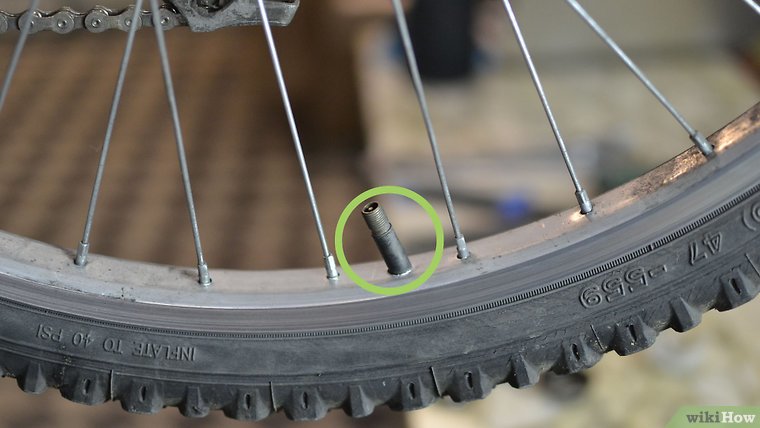 And the most important thing in the wheels is the right bike tube. To do this, sometimes there is not enough simple knowledge about how to choose and buy tubes for a bike, and what size they should be.
And the most important thing in the wheels is the right bike tube. To do this, sometimes there is not enough simple knowledge about how to choose and buy tubes for a bike, and what size they should be.
The most important things to look for before buying a bike tube are:
Before the advent of the mountain bike market, tubes, motorcycle tubes and car tubes were viewed in the same way. Later it became clear that the characteristics and dimensions of bicycle tubes are something special, and the approach to production has completely changed.
When it comes to buying the right tube for a bike, it's important to consider size differences. Tires always show the dimensions and allowable pressure for suitable tori. Marking types may vary. nine0003
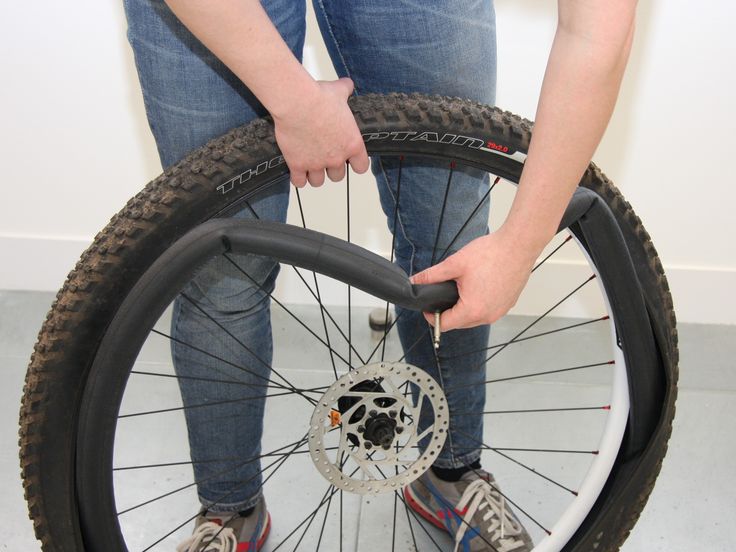 The entry 26x1.75/1.95/2.125 means this torus will fit all 26 wheels with a width of 1.75 to 2.125 inches.
The entry 26x1.75/1.95/2.125 means this torus will fit all 26 wheels with a width of 1.75 to 2.125 inches. Choosing the right inner tube for your bike will greatly improve your ride and reduce the chance of damage.
Read the label and stay safe. A smaller tube will fit a larger wheel, but not vice versa. You should always remember that the dimensions of the cycle chamber indicated on its surface and on the tire must match.
The required parameters are indicated in the ISO system in mm or inches. In order not to get confused in the sizes and markings that different manufacturers apply in different systems, use the conversion table from one system to another. nine0003
| Rim bore size in mm according to ISO | Tire size in inches | French size | Size in mm in ISO (width-landing diameter) | Explanations | |||||||||||||||||||||||||||||
|---|---|---|---|---|---|---|---|---|---|---|---|---|---|---|---|---|---|---|---|---|---|---|---|---|---|---|---|---|---|---|---|---|---|
| 681 | 22-681 | Sports cycle B-64 ″ Record (1958g) | |||||||||||||||||||||||||||||||
| 642 | 700A | Size | |||||||||||||||||||||||||||||||
| 635 | 28 x 1/2 | 700B | 40-635 | Road models of American, Danish, Chinese, Indian-Indian production | 29 2 x 7/8 | 22-630 | Shrose bicycles, including old models | ||||||||||||||||||||||||||
| 27 x 1 | 25-630 | ||||||||||||||||||||||||||||||||
| 27 x 1/8 | 9005 28-630 9. | ||||||||||||||||||||||||||||||||
| 27 x 1/4 | 32-630 | ||||||||||||||||||||||||||||||||
| 27 x 1 3/8 | 37-630 | ||||||||||||||||||||||||||||||||
| 700С | This size was invented by marketers for tires with a bore diameter of 622 mm. They differ from 28 only in tire height. | ||||||||||||||||||||||||||||||||
| 28 x decimal | 700C | For 622 mm tires. nine0056 | |||||||||||||||||||||||||||||||
| 28 x 3/4 | 700-18C 700x18s | 18-622 | |||||||||||||||||||||||||||||||
| 700-19S 700x19s | 19-622 | 20-622 | x 1 1/8 28 x 1 5/8 x 1 1/8 | 700-28C 700x28C | 28-622 | ||||||||||||||||||||||||||||
| 28 x 1.20 | 700-30x30s 700x30s | 30-622 | |||||||||||||||||||||||||||||||
| 28 x 1 3/4 28 x 1.5 | 700x38s 700-40c 9 bicycles: "Ukraine", "Minsk", "Sura", "Velta", "Aist" (111-321, 111-322).|||||||||||||||||||||||||||||||||
| 28 x 1 1/2 28 x 1 5/8 x 1 3/8 | 700C 700x35C 700x38C | 37-622 | "," Aist. | ||||||||||||||||||||||||||||||
| 27 x 1 1/4 28 x 1 5/8 x 1 1/4 | 700-32С 700х32С | 32-622 | Road and sports-touring bicycles, "Tourist", "Sport", "Sputnik" | ||||||||||||||||||||||||||||||
| 28 x 1 5/8 x 1 1/4 | Outdated Canadian designation F13 | ||||||||||||||||||||||||||||||||
| 28 x 1.4 | 700-35C 700x35s | 37-622 | Roads Roads. x 1.5 | 700x38C 700-38C 700-40C 700x40C | 40-622 | ||||||||||||||||||||||||||||
| 28 x 1 3/8 x 1 5/8 | 37-622 | ||||||||||||||||||||||||||||||||
| 700-42s 700x42s | 42-622 | ||||||||||||||||||||||||||||||||
| 28 | 900x 44-622-47C 700x47C | 47-622 | |||||||||||||||||||||||||||||||
| 28 x 2.00 | 700-50C 700x50C | 50-622 | |||||||||||||||||||||||||||||||
| 600 | 22 (23, 24, 25, 27, 28, 30) -600 | Old Soviet sports and track bicycles | |||||||||||||||||||||||||||||||
| 599 | 9005 26 X 1.32-599 | Very old American light bikes. | |||||||||||||||||||||||||||||||
| 26 x 1 7/8 | 47-599 | ZIF (Penza) 190-535 "Samson" | |||||||||||||||||||||||||||||||
| 597 | 26 x 1/4 (EA1) (England) | 9 | 9 | 9 | 32-597 | Old English sport and club bikes. | |||||||||||||||||||||||||||
| 26 x 1 3/8 (S-6) | 37-597 | Light bicycles from the American company Schwinn. | |||||||||||||||||||||||||||||||
| 590 | 26 x 1 1/8 | 28-590 | Soviet bicycles ZiF (Penza), Diana, Prima, Virazh, Relay, Sura, Breeze ”, “Tempo”. American and English 3 and 10 speed. | ||||||||||||||||||||||||||||||
| 26 x 1 1/4 | |||||||||||||||||||||||||||||||||
| 26 x 1 1/2 | 650B | 37-584 | |||||||||||||||||||||||||||||||
27. 5 х 1.5 5 х 1.5 | 40-584 | ||||||||||||||||||||||||||||||||
| 27.5 х 1.65 | 44-584 | ||||||||||||||||||||||||||||||||
| 27.5 x 2.1 | 54-584 | ||||||||||||||||||||||||||||||||
| 27.5 x 2.25 | 57-584 | ||||||||||||||||||||||||||||||||
| 27.5 х 2.3 | 60-584 | ||||||||||||||||||||||||||||||||
| 27.5 x 2.4 | 62-584 | ||||||||||||||||||||||||||||||||
| 27.5 х 2.8 | 70 -584 | ||||||||||||||||||||||||||||||||
| 571 | 26 x 3/4 | 650x20C | 20-571 | Triathlon, time trial, small road bikes. | |||||||||||||||||||||||||||||
| 26 x 7/8 | 650x23s | 23-571 | |||||||||||||||||||||||||||||||
| 26 x 1 | 650c | 23-571 | |||||||||||||||||||||||||||||||
| 26 | Road Schwinn | ||||||||||||||||||||||||||||||||
| 559 | 26 x 1.0 | 25-559 | Most mountain bikes. Classic landing diameter for 26 wheels. nine0056 | ||||||||||||||||||||||||||||||
| 26 х 1.25 | 32-559 | ||||||||||||||||||||||||||||||||
| 26 х 1.35 | 35-559 | ||||||||||||||||||||||||||||||||
| 26 х 1. | 37-559 | ||||||||||||||||||||||||||||||||
| 26 х 1.5 | 40 -559 | ||||||||||||||||||||||||||||||||
| 26 х 1.6 | 44-559 | ||||||||||||||||||||||||||||||||
| 26 х 1.75 26 х 1.75 х 2 | 47-559 | ||||||||||||||||||||||||||||||||
| 26 х 1.9 | 50-559 | ||||||||||||||||||||||||||||||||
| 26 x 2.00 | 52-559 | ||||||||||||||||||||||||||||||||
| 26 x 2.10 | 54-559 | ||||||||||||||||||||||||||||||||
| 26 x 2.15 | 55-559 | ||||||||||||||||||||||||||||||||
| 26 х 2.25 | 57-559 | ||||||||||||||||||||||||||||||||
| 26 х 2.3 | 60-559 | ||||||||||||||||||||||||||||||||
| 26 x 2.4 | 62-559 | ||||||||||||||||||||||||||||||||
| 26 x 3.0 | 75-559 | ||||||||||||||||||||||||||||||||
| 547 | × 1. English children's and American firm Schwinn|||||||||||||||||||||||||||||||||
| 24 × 1 3/8 (S-5) | Children's American bicycles of Schwinn | ||||||||||||||||||||||||||||||||
| 540 | 24 x 1/8 | 600a | 9005 28-540 9003 European bicycles, most wheelchairs|||||||||||||||||||||||||||||||
| 24 x 1 1/4 | 32-540 | ||||||||||||||||||||||||||||||||
| 24 x 1 3/8(E-5) 24 x 1 3/8 A 9005 6 | |||||||||||||||||||||||||||||||||
| 533 | 24 x 1 1/2 | 37-533 | "Salute", "Altair", "Ervi", "Eaglet", "Erelyukas", "Swallow" ("Kregzdute", "Kregzhdute" - Siauliai Bicycle Plant Lithuania). This is the Soviet standard and tires with a diameter of 533 mm are produced only with a width of 37 mm. Be careful when replacing because not all 24 inch tires will fit 533 wheels. This is the Soviet standard and tires with a diameter of 533 mm are produced only with a width of 37 mm. Be careful when replacing because not all 24 inch tires will fit 533 wheels. | ||||||||||||||||||||||||||||||
| 520 | 24 x 1 | 25-520 | Road wheels for kids bikes | ||||||||||||||||||||||||||||||
| 507 5 9 560056 | 40-507 | Mountain children. “Salut”, “Altair”, “Ervi” | |||||||||||||||||||||||||||||||
| 24 x 1.75 | 47-507 | ||||||||||||||||||||||||||||||||
| 24 x 2.0 | 50-507 | 9005-95-50 | |||||||||||||||||||||||||||||||
| 24 х 2.25 | 57-507 | ||||||||||||||||||||||||||||||||
| 24 х 2.35 | 60-507 | ||||||||||||||||||||||||||||||||
| 24 х 2.5 | 62-507 | ||||||||||||||||||||||||||||||||
| 24 х 2.6 | |||||||||||||||||||||||||||||||||
| 20 x 1/4 | 30-451 | ||||||||||||||||||||||||||||||||
| 20 x 1 3/8 | 37-451 | ||||||||||||||||||||||||||||||||
| 445 | 20 X 1/4 | 90059005 9005 | 9005 | 9005 | 9005 | 9005 | 9005 | 9005 | 9005 | 9005 | 9005 | 9005 | 9005 | 9005 9AT 445 | “Schoolboy” (old Soviet models) | ||||||||||||||||||
| 440 | 500A | European folding children's bicycles | |||||||||||||||||||||||||||||||
| 419 | 20 x 1 3/4 | 0056 | |||||||||||||||||||||||||||||||
| 406 | 20 x 1. 25 25 | 32-406 | Most BMX bikes, kids and folding models. "Venta" (folding model 175-811). "Stork" (folding, model 113-322). "Tisa-2", "Cross", "KAMA", "DESNA", "Schoolboy", "Velta Kama", "Dubisa" (Siauliai bicycle factory), "Eureka" and other folding and old Soviet models. Folding Mustang | ||||||||||||||||||||||||||||||
| 20 x 1.35 | 35-406 | ||||||||||||||||||||||||||||||||
| 20 x 1 3/4 20 x 1.5 | 40-406 | ||||||||||||||||||||||||||||||||
| 20 x 1.75 20 x 1.75 x 2 | 47-406 | ||||||||||||||||||||||||||||||||
| 20 x 1.95 | 50-406 | 9005||||||||||||||||||||||||||||||||
| 20 х 2.125 | 57-406 | ||||||||||||||||||||||||||||||||
| 20 х 2.35 | 60-406 | ||||||||||||||||||||||||||||||||
| 20 х 2.5 | 62-406 | ||||||||||||||||||||||||||||||||
| 20 х 2.6 | 65 -406 | 16 x 1 1/8 | 28-349 | Old Moulton, Brompton and other folding bikes, ligerade front wheels, kids bikes. | |||||||||||||||||||||||||||||
| 16 x 1 3/8 | 37-349 | ||||||||||||||||||||||||||||||||
| 340 | 4005 | Children's European bicycles | |||||||||||||||||||||||||||||||
| 317 | 16 x 1 3/4 | Schwinn American children's bicycles | |||||||||||||||||||||||||||||||
| 305 | 16 x 1. 5 5 | 40-305 | Children's bicycles, some folding, touring and bicycles. | ||||||||||||||||||||||||||||||
| 16 х 1.75 | 47-305 | ||||||||||||||||||||||||||||||||
| 16 х 2.0 | 54-305 | ||||||||||||||||||||||||||||||||
| 16 х 2.125 | 57-305 | ||||||||||||||||||||||||||||||||
| 16 х 2.5 | 62 -305 | ||||||||||||||||||||||||||||||||
| 288 | 14 x 1 3/8 | 350A | 37-288 | Children's bicycles, jackets | |||||||||||||||||||||||||||||
| 254 | 9005 x 1.540-254 | Children 14 x 1.75 | 47-254 | ||||||||||||||||||||||||||||||
| 14 x 2 | 54-254 | ||||||||||||||||||||||||||||||||
| 239 | 12 1/2 x 1 3/8 x 1/4 | 300-32A 300x32a | 32-239 | Children's bikes, balance bikes | |||||||||||||||||||||||||||||
| 205 | 12 1/2 x 2 1/4 | 56-205 | KVD children's bicycles, sometimes suitable for baby strollers (Dutiki tires) | ||||||||||||||||||||||||||||||
| 20059 | 9ATH 12 x 1. 75 12 1/2 x 1.75 12 1/2 x 1.9 75 12 1/2 x 1.75 12 1/2 x 1.9 | 47-203 | Small children's bicycles, runaways, baby strollers | ||||||||||||||||||||||||||||||
| 12 x 1.95 | 9005 54-203 | ||||||||||||||||||||||||||||||||
| 2 1 1 1 1 1 1 1 /2 x 2 1/4 R | 57-203 | ||||||||||||||||||||||||||||||||
| 12 1/2 x 2 1/4 | 62-203 | ||||||||||||||||||||||||||||||||
| 152 | 10 x 2 | 54-152 | Tires for self-scatters, tunkers for young children, taces and television taps and television tires and television tires and television tires and television tires and television tires and television tires and carts , Children's strollers | ||||||||||||||||||||||||||||||
| 137 | 8 x 1/4 | 32-137 |
Many specialized stores offer a huge range of parts and components for bais. The Velo-Moto online store in its catalog opens the world of cycling for professionals and amateurs. nine0003
nine0003
Once you've decided where to buy your inner tube, it's important to focus on the other selection criteria after width and size:
These are important indicators that together ensure your safety, speak of a reasonable approach.
This is a piece that consists of a tube and is equipped with a special check valve for air inflation.
There are rubber ones - not very reliable, not expensive, there is a high probability of separation and damage. There are metal ones - reliability and price are higher. nine0003
According to the type of valve, the nipples are divided into 3 groups.
 It has a diameter of 8-8.5 mm and a length of 40 mm (rarely 60 mm). You can pump up such a chamber at any tire fitting or with a conventional car pump. nine0008
It has a diameter of 8-8.5 mm and a length of 40 mm (rarely 60 mm). You can pump up such a chamber at any tire fitting or with a conventional car pump. nine0008 Those who ride more than once a year know that a very quick and reliable way to protect their inner tube from damage is to purchase a special filler for it, anti-puncture. You can initially choose a product with a ready-made protection system, but professionals recommend buying a substance separately and pouring it into the “donut” yourself.
In case of accidental damage, the composition itself comes out from the inside, which will clog the hole. There is a margin of time to get to a more or less equipped point and provide “first aid” to your wheeled friend. On the road, you should always take a spare wheel and a repair kit with you, you never know what can happen. nine0003
In everything it is better and more correct to adhere to the “golden mean”, this is the opinion of managers from the Velo-Moto online store.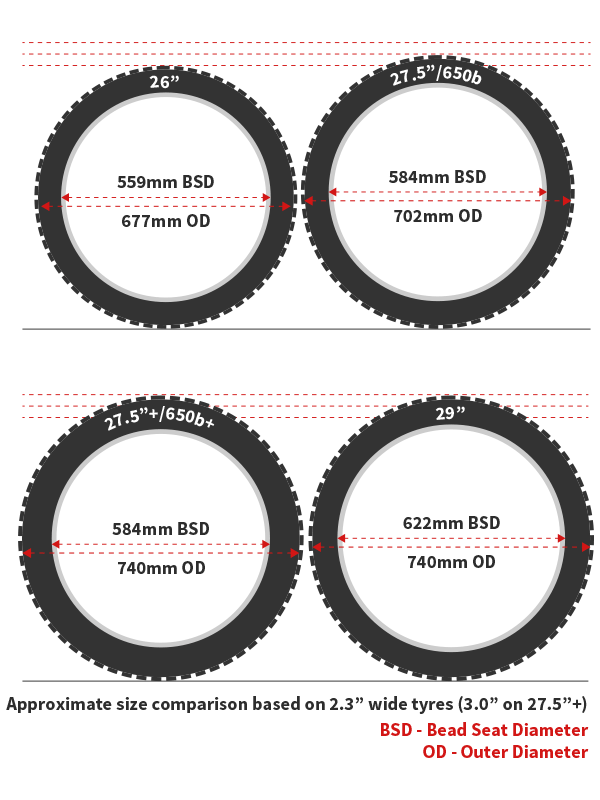 It is important not to go beyond the recommended dimensions, to listen to expert opinion. Then your bike will delight you for many years with a high-quality ride, excellent speed and rich impressions. You can view the catalog of tires and cameras here.
It is important not to go beyond the recommended dimensions, to listen to expert opinion. Then your bike will delight you for many years with a high-quality ride, excellent speed and rich impressions. You can view the catalog of tires and cameras here.
Let's start with the basics... What is a cycling tube? A bicycle bladder is a ball-like structure that can be inflated and deflated using a valve. When inflated with air, the chamber fills the tire, giving you a comfortable and safe ride. nine0003
There are also tubeless bike tires, but most likely your bike is fitted with tubes.
Bicycle inner tube is always matched to the size of the tire fitted. There are quite a few different wheel diameters on the market right now, which can make it difficult for you to find the correct tube size for your bike.
Which inner tube do I need for my bike?
Tubes are available in different sizes and with different types of nipples. These are two key factors to consider when choosing a bike tube. nine0003
Tubes vary in size according to tire diameter and width:
Selecting the wrong diameter may result in a tube that is too long or the wrong width and the tube cannot fill the tire.
So how do you know what size you need?
There are two surefire ways to find the correct tube size for a bike:
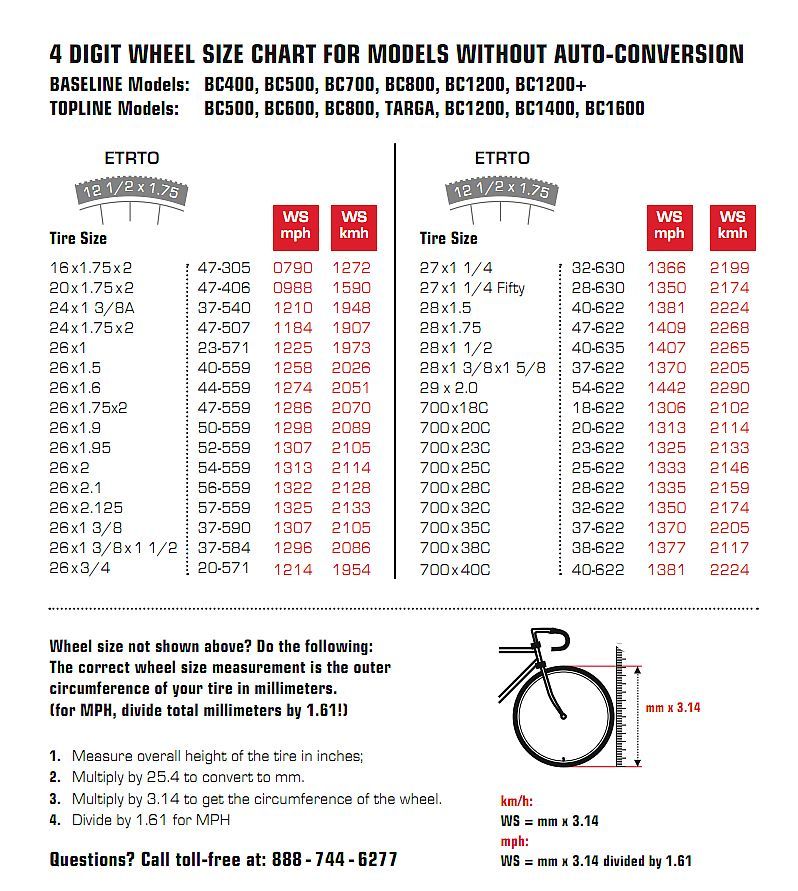 On it you should see something like "700x23c" on a road bike, or "29x1.9" on a mountain bike. The first number in this sequence refers to the circumference of the wheel; the latter refers to the tire width. Additional markings on the sidewall of a tire may include ISO ETRTO international size - this would look like "23-622" for a 700x23c tyre, or "50-559" for 26"x1.9" tires. Size ratio table of various specifications.
On it you should see something like "700x23c" on a road bike, or "29x1.9" on a mountain bike. The first number in this sequence refers to the circumference of the wheel; the latter refers to the tire width. Additional markings on the sidewall of a tire may include ISO ETRTO international size - this would look like "23-622" for a 700x23c tyre, or "50-559" for 26"x1.9" tires. Size ratio table of various specifications. Check the sidewalls of your tire to determine its size
Valve used to inflate/deflate the tube. There are two main types of valves: Schrader and Presta. They are fairly easy to identify visually. nine0003
Presta valves are narrower. Schrader valves are shorter and thicker (used on cars).